How To Build A Service Design Project

Why is the success charge per unit in implementing service design projects still low? Why do brilliant concepts fail when information technology comes to anchoring them in the daily business organization of the client organisation?
This commodity by is function of the latest effect Touchpoint Vol. 12 No. 1 - Embracing change. Observe the full list of manufactures of this Touchpoint result to get a sneak peek at more fascinating manufactures!Touchpoint is available to purchase in print and PDF format.
To get a hands-on learning experience and more than detailed insight join the upcoming workshop with Tina.
Where are the barriers to implementing service pattern projects and where are the optimisation potentials? And are in that location any influencing factors that service designers should consider in future projects? Finding answers to these questions and better understanding the complex topic of implementation was the motivation backside a three-year international written report. The results are 24 influencing factors and the 'KUER' implementation model.
Designing for impact means designing for implementation. Today, the focus of most service design projects is on the outset phases – only around four percent1 of the methods applied in service design focus on implementation. Information technology is therefore likely that service designers will need to expand their methodological knowledge and skills in society to be more successful in the time to come. Dealing with this complex upshot requires the integration of new skills and approaches. Because the implementation of new concepts requires organisational and cultural changes for the customer organisation, techniques from the areas of systemic organisational evolution and management consulting can be particularly valuable.
Study design and approach
Within the framework of a iii-year qualitative written report, implementation projects of complex service design concepts were examined at the intersection of external service design consulting and its clients (for-profit organisations). With the support of approximately l experts from the areas of service design practitioners (Hellon, Livework, Night horse, IDEO, etc.), service providers (EON, BMW Group, Océ, etc.) and business and organisational consulting (Capgemini, Etventure, OSB-I, etc.), explorative interviews and workshops were conducted to identify influencing factors, frequent barriers and time to come potentials. The many factors found were reduced to a set of 24 and examined for their interrelationships by using sensitivity analysis, an effective system analysis tool designed by systems researcher Frederic Vester2. Sensitivity assay recognises that client organisations are not only embedded in complex environments, just are themselves circuitous socio-technical systems. At that place is broad scientific agreement that due to the complexity of organisations, the consideration of arrangement relationships provides essential insights and perspectives for successful modify initiatives. Through a systemic approach3, many of the obstacles occurring in service design projects could be explained. As well 12 general lessons can exist derived for applied utilize.

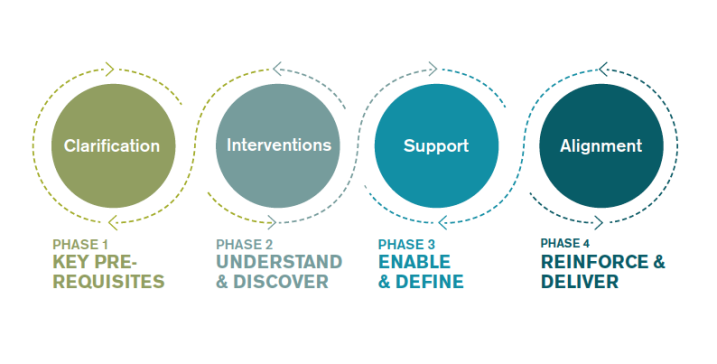
Results: Objectives and obstacles
A crucial question is what success can hateful in the context of service design implementation. Targets can exist purely process- or outcome-oriented, or a combination of both. Examples of process-oriented success are when employees acquire service design methods, spaces for co-creative piece of work are established within the client company, and the organisation prepares for cultural change. In these cases, the successes would exist based on the fact that the client organisation becomes familiar with new methods and prepares itself procedurally and spatially for futurity projects. On the other hand, a result-oriented success is when the new service design concept is introduced into the company's typical fashion of working, accepted by users and reconfirmed by measurement that it meets criteria such as efficiency, user satisfaction, or return-on-investment (ROI). It becomes obvious that in that location are dissimilar areas of awarding and success in service design, which in turn depend on the goals and capabilities of the client besides as external consultants. The reasons found for failure are just equally numerous. Obstacles may exist on the client side also equally on the service designers' side. For example, the lack of experience and implementation maturity of external service designers, internal resistance or controlling dilemmas of top management, lack of user acceptance, or a better offer from competing brands.
Results: 24 influencing factors
Recurring patterns and general influencing factors (see Figure 3 ) could exist identified despite the heterogeneous projects establish in practice. These factors were examined for their result upon each other and their influenceability. Six of them can be described as necessary 'hygiene' factors and xviii as 'desired' factors. The hygiene factors are fundamental prerequisites that must be present to favour consequence-oriented implementations. Ideally, they must be considered as early every bit the contract description stage in Phase 1. Considering, as expected, not only 1 or two factors were constitute, it becomes clear that service design projects are not happening in an isolated and context-free space.
In many cases, service designers spend several years working on private touchpoints earlier commissioning and successfully implementing end-to-finish, holistic client experiences. When projects fail, it is reasonable to presume that either ane or both parties weren't set for implementation, or that the hygiene factors were just not yet fulfilled at the time.
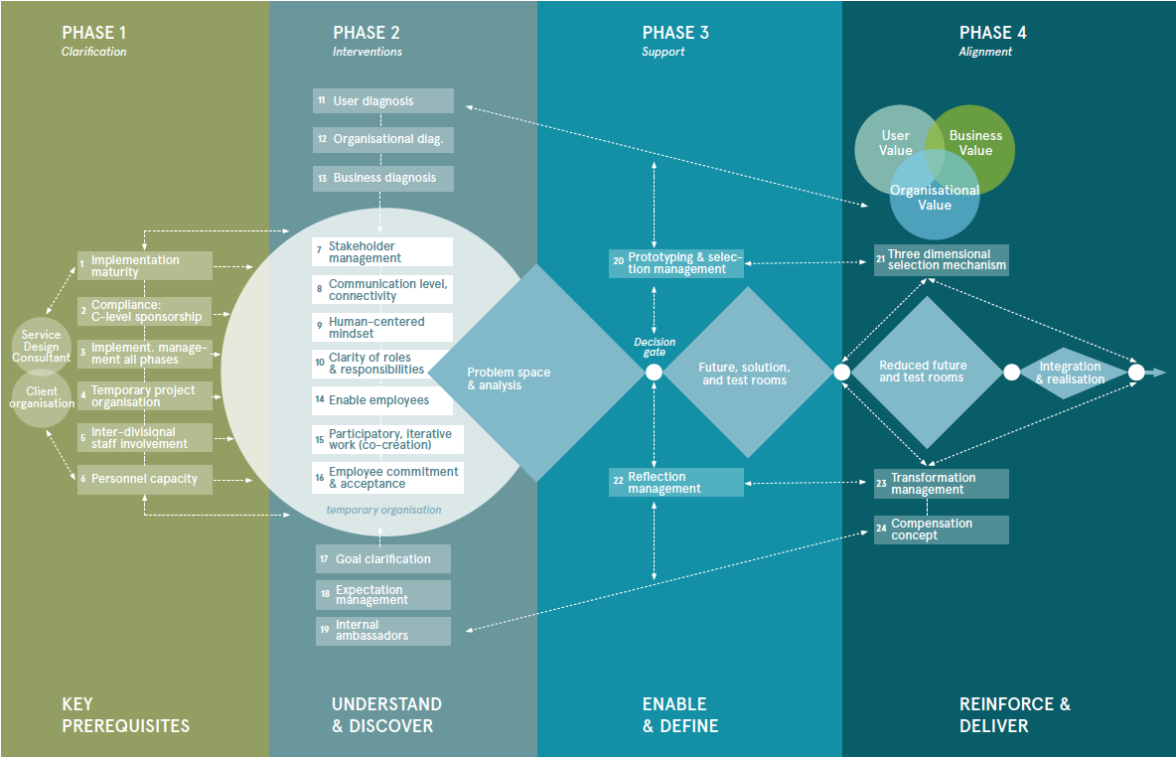
Want to go an even better agreement and a practical deep dive into the methods discussed hither? Tina offers a workshop specifically tailored to the topic of this article to give you a easily-on learning experience plus valuable tools and methods.
Results: The KUER implementation model
To engagement, there is no model in service pattern enquiry that offers a comprehensive assay and construction of the influencing factors in the implementation of projects. Based on the empirical results, the KUER model was adult, consisting of four phases and primary activities (see Figure i). KUER stands for 'Key Prerequisites', 'Empathize & Notice', 'Enable & Define' and 'Reinforce & Evangelize'. In add-on, Effigy 2 presents the factors and their relationships. Looking at the KUER process model, it becomes apparent that the entire procedure begins with the clarification in Phase i ('Primal Prerequisites'), merely that the phases do not have to follow each other linearly because setbacks and feedback must be taken into account. In Stage 2 ('Understand and Discover') a temporary project organisation ('safe space = physical and mental space for new ideas and thoughts unfamiliar to the organisation and co-creative working') is set upward and extensive diagnostics are carried out. Users, the client organisation and economic parameters must be analysed. Solutions developed in Stage 3 ('Enable and Define') are tested in rapid cycles with users, employees and relevant stakeholders and evaluated at conclusion nodes using a three-dimensional selection mechanism. Every bit activities to support the process and its orientation are used iteratively as required, the transition to the integration Stage 4 ('Reinforce and Deliver') is seamless.
Results: 12 lessons learned
A systemic approach to the implementation process helps service designers to achieve a better understanding of the interaction of systemic elements and their causes. The bones insight that there is an unmanageable number of social (groups such as departments) and psychological systems (the individual actor/homo) colliding is an important attribute because the connectedness of the individuals involved depends on it. If systems thinking is practical to service pattern practice, the post-obit lessons (which are all closely interwoven) can enrich daily projection work.
Lesson Number 1: Six necessary hygiene factors
It became apparent that the post-obit six hygiene factors are essential for a successful implementation: 1) Implementation maturity, 2) Compliance/C-level sponsorship, iii) Implementation management at all phases, 4) Temporary project organisation, 5) Inter-divisional staff involvement and vi) Personnel chapters.
Lesson Number 2: Implementation starts on mean solar day one
The foundations for implementation are already set up at the contract clarification stage. Information technology should be investigated whether (and up to which iteration) the six aforementioned hygiene factors could be sufficiently nowadays. An iterative service design process calls for 'iterative contracting.'iv If ane considers the change curves in the alter literature, it becomes clear that integrating something new takes a significant amount of time. Information technology is therefore important to back-trail the implementation procedure from offset to finish when the new concept is reconfirmed through measurement, testing and anchored in the organisation'due south 24-hour interval-to-twenty-four hour period activities.
Lesson Number 3: Client organisations cannot be controlled linearly and are always context-dependent
Customer organisations have their unique history and reason for being. Therefore, information technology is crucial to thoroughly diagnose the arrangement (e.m., existing civilization, stakeholder expectations, expected resistance) and to build upon their cognition.5 Client organisations as 'living systems' cannot be controlled from the exterior, considering they cannot be reduced to being mere uncomplicated machines.
Lesson Number 4: Working against the system logic creates resistance
It becomes evident that unlike 'worlds' – i.e., system logic, languages, terms, cultures and working methods – run across temporarily when external service designers collaborate with the employees of a client organization. Resistance from employees is the norm rather than the exception when new and foreign elements are introduced. The unknown endangers the status quo of every 'living organisation' and can create great fears.
Lesson Number 5: Systems and people are oriented towards the meaning they give to things
Tangible prototypes can help employees and executives understand both rationally and emotionally the opportunities and risks of a new service design concept. Because the evidence and the pattern of service design concepts are closely interwoven, prototyping and storytelling are of fundamental importance: they accept the strength to make the abstruse vivid for not-specialists and to support social interaction processes. In practice, the prototypes must make the 'meaning' of the idea applicative to the organisation, in order to reduce uncertainties.
Lesson Number half-dozen: Connection capability
Understanding each other is trivial simply indispensable.
It is appropriate to clarify common terms that include both the service pattern process and internal abbreviations or terms. External service designers should also develop a sense of the existing corporate culture so equally not to be unintentionally irritating and incomprehensible. Being able to communicate with executives is an essential prerequisite.
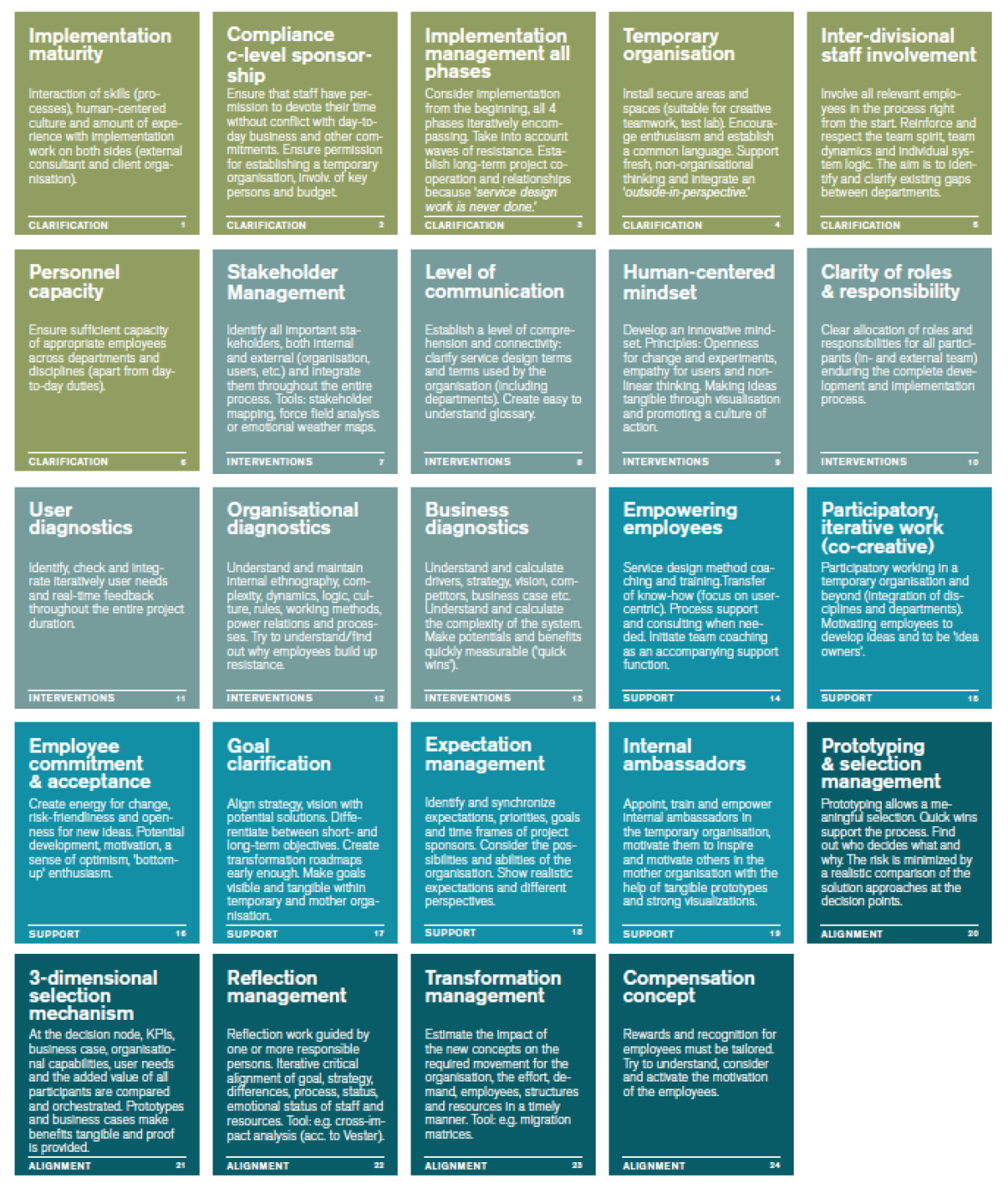
Lesson Number seven: Closeness - distance dilemma
Systemic organisation consultants emphasise collaborative approaches, considering as employees are empowered by learning new skills and methods, organisational learning takes place and resistance diminishes. Service designers must, therefore, work with the clients in unusual proximity, but always keep enough of a distance to avoid being dragged into the customer's problems. The temporaryorganisation provides a good framework for this close cooperation. Through early involvement, employees can experience user issues first-mitt, recognise their own meaning in the insights found, and thus develop the necessary credence for the possibly new or even uncomfortable changes ahead. A crucial result is a shared awareness of the identified issues. Service designers can experience a get-go wave of resistance when they conduct the diagnosis of the client's system (or, e.g., an existing user journey), using a purely external view without the participation of internal employees.
Lesson Number 8: System logic = survival
If systems (clients) are confronted with their external image (results of user research), which usually involves a lot of negative aspects and an extensive drove of failures, a defensive mental attitude tin spread among the employees, considering this can be seen as an attack confronting the existing system. The system tries to protect itself and restore its balance to 'survive'. Information technology has been reported that service design projects often come to a halt or lose the necessary priority for the client at exactly this point.
Lesson Number 9: Each action is an intervention
Every activeness, such as stakeholder interviews or co-creation workshops, are interventions. However, an effect may only go visible or noticeable in the client system at a afterward betoken in time. This highlights the strong networking of actors and deportment as well equally the fact that unintended consequences tin arise.
Lesson Number ten: Risk minimisation
Executives must be supported in controlling and risk cess. The prediction that the adult concept tin can be economically relevant in the market, satisfactory from the user'south point of view and successful for the organisation regarding skills, remuneration and full general atmospheric condition within the desired fourth dimension window, must exist proven repeatedly in the process. The more the system logic, civilisation and interdependencies are understood, the college the probability of beingness able to reduce uncertainties and thus convince top direction.
Lesson Number 11: Three-dimensional consulting
Ideally, service designers support in 3 ways: equally procedure, specialist and mindset consultants. Depending on fourth dimension and role, they tin provide both conceptual and process-related support so that employees remain able to work and process reliability is guaranteed. If service designers are not responsible for or do not desire to control the process, a successful later implementation is questionable.
Lesson Number 12: Prepare disciplinary borders!
For service designers who are leaving the process at an early stage, considering their focus is on conceptual work, information technology is crucial to recall ahead and ready the disciplinary boundaries for the concepts to not end up in the drawer as "corporate amusement," every bit Melvin Brand Flu (from Livework) calls information technology.
Outlook
The KUER model can be used at any fourth dimension in the process to enable the actors involved to explore new perspectives almost the project, to reverberate together or to derive options for action. Systematic reflection can promote learning processes and contribute to improving the readiness for implementation. Noesis of the interrelationships and influencing factors tin can be used to fix or adapt private success criteria for service design projects. This prevents negative consequences and unrealistic expectations at an early stage, and preserves both the quality and reputation of the service blueprint arroyo and the service designers.
Service designers have fantabulous capabilities and methodological approaches to support organisations in change projects. Therefore, it is an advantage for the success of transformations if they are accompanied past an innovation project using a human-centred pattern process. Service designers who want to back up the implementation of projects must acquire skills from organisational consulting – peculiarly business concern management and systemic consulting – or expand their service portfolio together with partners. Connectivity with the visitor's meridian management and employees at all levels of the hierarchy must be ensured throughout the process. A fundamental insight is that organisations as social systems cannot ultimately be specifically controlled from outside or past service providers. They tin only change themselves and successfully implement concepts. On the long way in that location, however, client organisations take a great need for professional support.
i Martins, R. (2012). Poster at Design for Next, EAD 12 Rome.
ii Vester, F. (2007). The Art of interconnected thinking: Tools and concepts for a new arroyo to tackling complication.
3 See also Luhmann. Northward. (1984). Soziale Systeme. Grundriß einer allgemeinen Theorie. Simon. F. (2015). Einführung in die systemische Organisationstheorie.
iv Mager. B. (2018). Keynote at Service Design Conference, Helsinki Republic of finland.
5 Mager, B. (2010). Service Design and Behavioural Change. Touchpoint Vol. 1 Nr.3: 73-75.
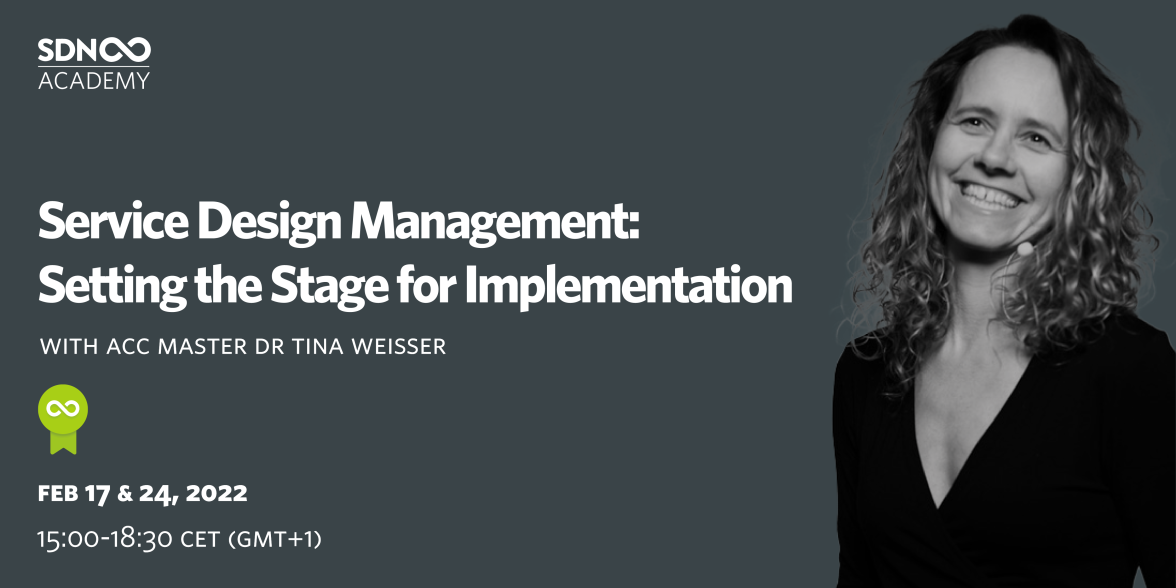
Want to get an even better understanding and a applied deep dive into the methods discussed here? Tina offers a workshop specifically tailored to the topic of this article to give you a hands-on learning experience plus valuable tools and methods.
Related Community Cognition
Touchpoint open article 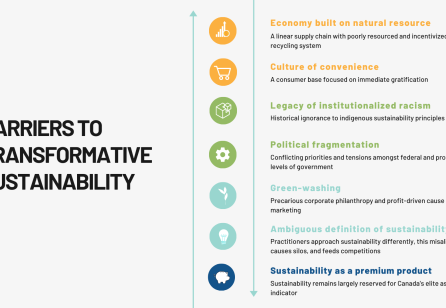
Designing the Future We Need
The concept of sustainability embraces a wide range of opportunity areas, every bit the diversity of the United Nations' Sustainable Devel- opment Goals (SDGs) demonstrates1. What role might service design play to address the SDGs and help steer the transformation to sustainable and resilient solutions? We explore how organisations might respond strategically to these challenges and opportunities through the exercise of strategic foresight and blueprint.
Proceed reading
Touchpoint open commodity 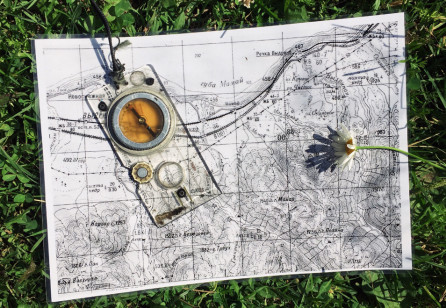
"What Now?" The function of service design in mapping uncharted territory
Disruptions are inevitable. Whether we face arrangement-level events or minor interruptions, nosotros spend our days navigating the uncertain space between strategic ethics, tactical intentions and the ambiguity of the mundane. Well-nigh of the fourth dimension we navigate gaps between our plans and reality without event. Other times nosotros face up "What Now?" moments.
Go on reading
Touchpoint open up commodity 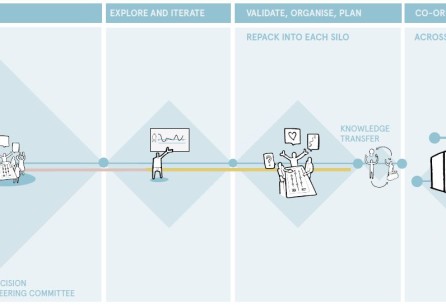
Combining Service and Systemic Design in Kingdom of norway'southward Public Sector
Service blueprint is currently dominated by a focus on the user journeying, and therefore is not sufficient in itself for highly complex public challenges which cross agencies and sectors. To tackle circuitous public sector issues, the integration of systemic pattern capacity and a cross-disciplinary approach is crucial.
Continue reading
Touchpoint open commodity 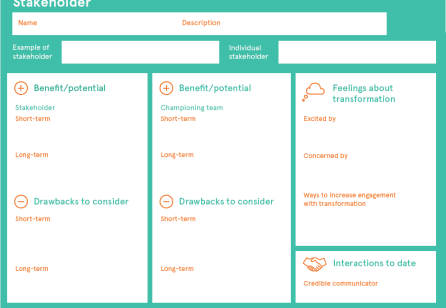
A Flywheel Model of Change Direction: Inspiring traditional change management through service blueprint
In this article, nosotros discuss that service designers are particularly well equipped with skills and tools to create change in organisations and tin practice so more explicitly by applying a flywheel capability model to their work.
Keep reading
How To Build A Service Design Project,
Source: https://www.service-design-network.org/community-knowledge/successfully-implementing-service-design-projects
Posted by: bondyoultold.blogspot.com


0 Response to "How To Build A Service Design Project"
Post a Comment